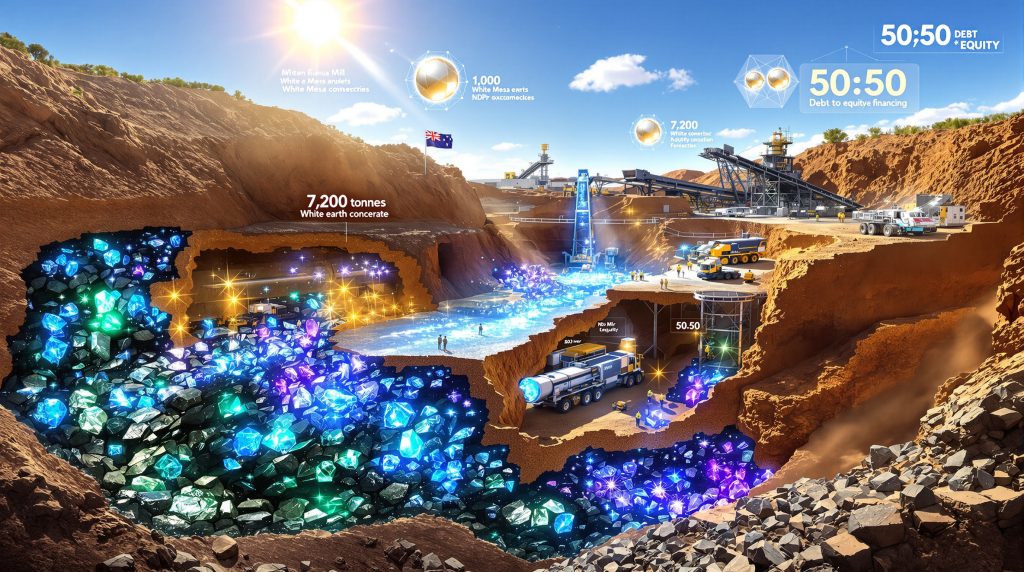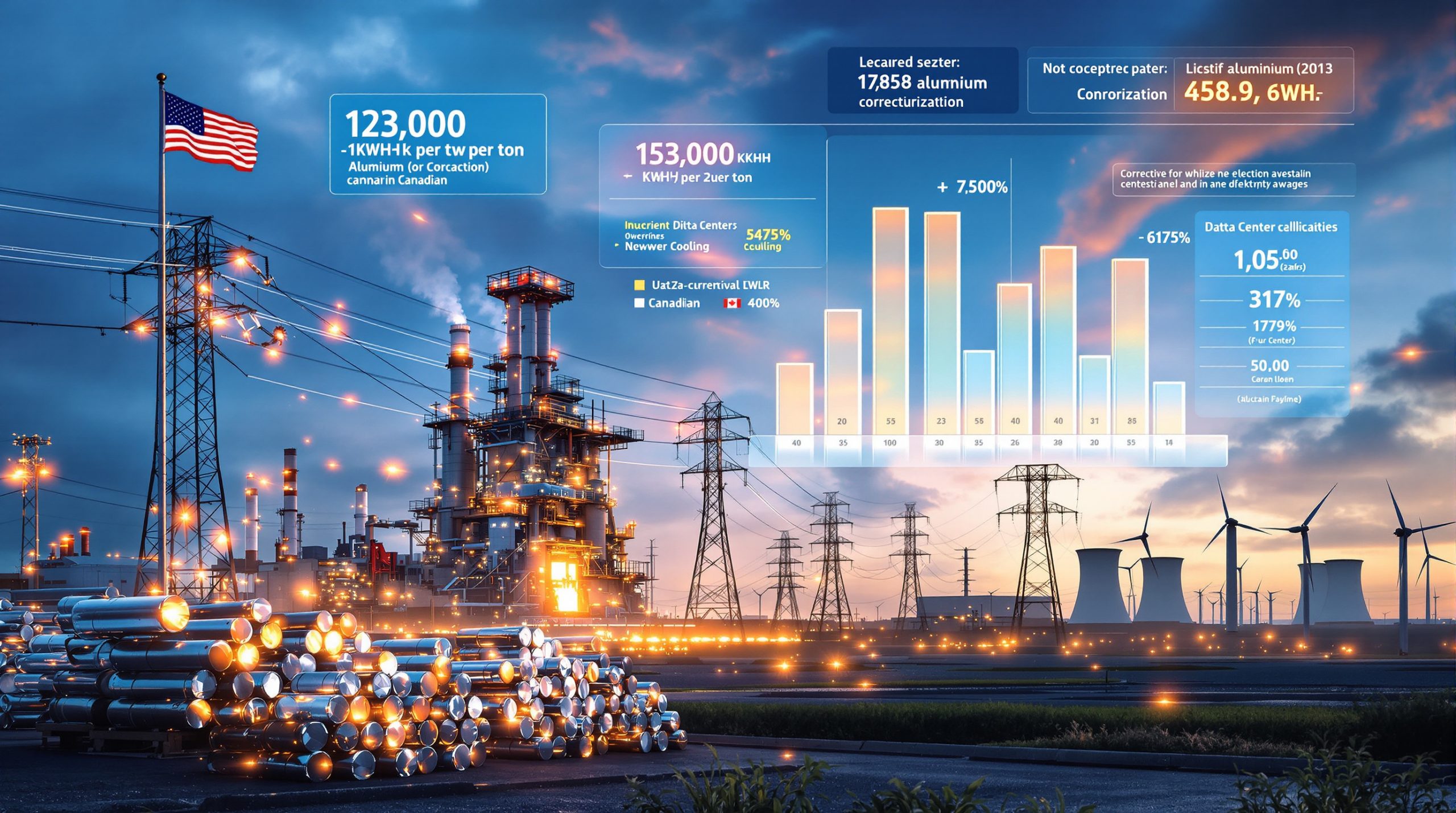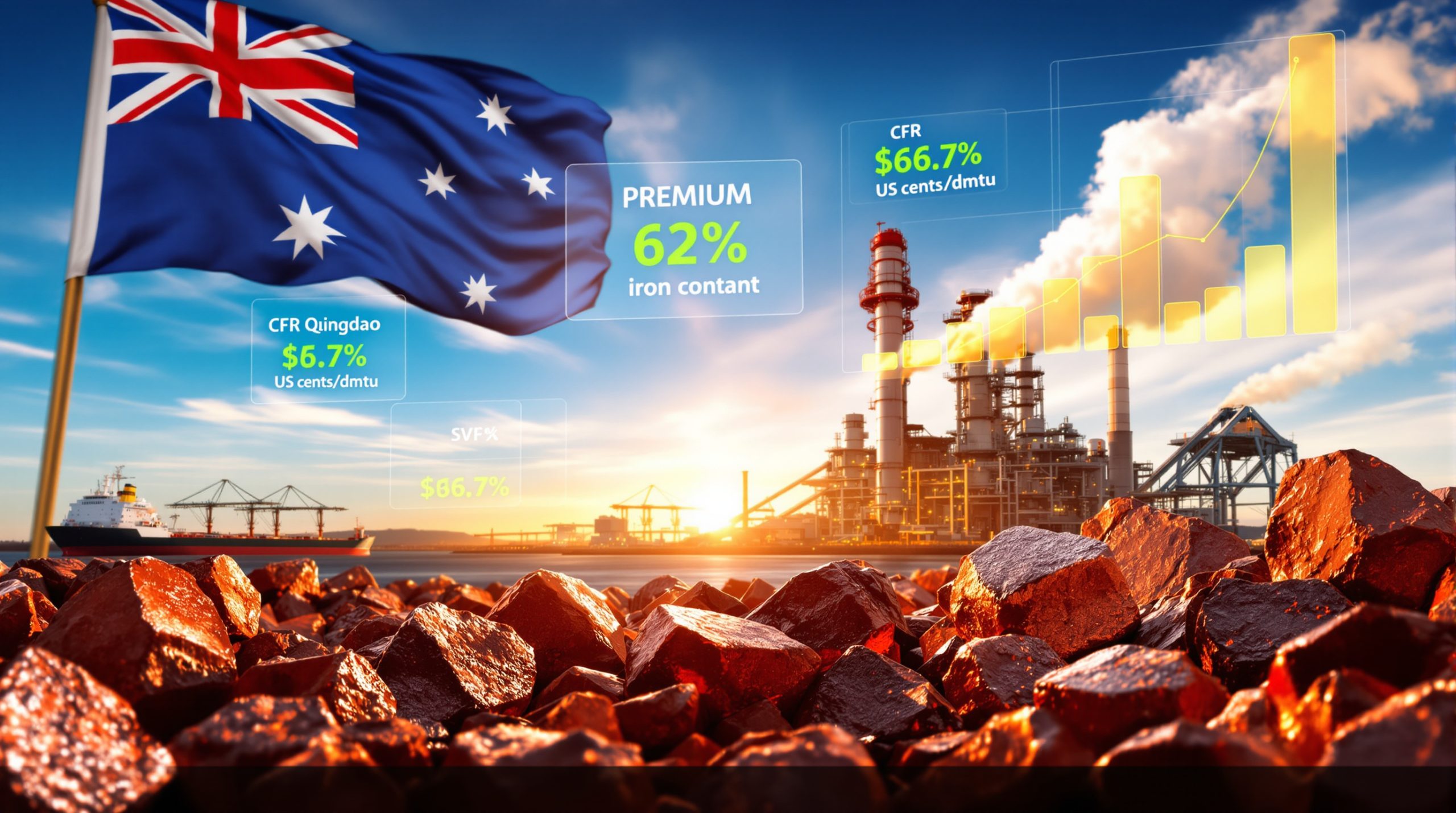Understanding Australia's Strategic Rare Earth Initiative
Export Finance Australia's conditional backing of the Donald Rare Earth and Mineral Sands Project signals a transformative moment in Australia's critical minerals sector. This A$520 million initiative represents more than a single mining venture—it embodies Australia's strategic push to establish itself as a reliable supplier of critical materials essential for renewable energy technologies and advanced manufacturing.
The project's significance extends beyond its substantial financial backing. Located in Victoria's Murray Basin, this development targets both light and heavy rare earth elements alongside zircon-rich mineral concentrates, positioning Australia to capture a greater share of the global rare earth value chain during a period of unprecedented demand growth.
Strategic Location and Geological Advantages
The Murray Basin's geological profile offers unique advantages for rare earth extraction. This large sedimentary basin spans across Victoria, New South Wales, and South Australia, containing established mineral sands deposits with significant heavy mineral concentrations. The region's existing mining infrastructure and regulatory frameworks provide operational efficiencies that reduce development risks compared to greenfield locations.
Victoria's mining heritage in mineral sands extraction creates additional benefits through established supply chains, skilled workforce availability, and proven environmental management protocols. These factors collectively reduce the typical uncertainties associated with new mining developments in untested regions.
Export Finance Australia's Conditional Support Framework
Export Finance Australia has issued a non-binding letter of support worth up to A$80 million for senior debt financing, representing approximately 15% of the project's total capital requirements. This conditional endorsement demonstrates EFA's assessment that the Export Finance Australia Donald project aligns with Australia's national economic interests while meeting stringent commercial viability criteria.
The support structure operates through EFA's mandate as Australia's export credit agency, established under the Export Finance and Insurance Corporation Act 1991. EFA provides financial solutions to support Australian exporters and businesses engaged in export-oriented activities, operating on commercial principles while managing risk appropriately.
Due Diligence Requirements and Risk Assessment
The conditional nature of EFA's support reflects comprehensive evaluation processes required for government-backed financing. Furthermore, understanding critical minerals energy security becomes essential for evaluating such projects. Key assessment areas include:
• Financial viability evaluations examining project economics and cash flow projections
• Technical feasibility studies validating mining and processing methodologies
• Environmental impact assessments ensuring compliance with regulatory standards
• Social responsibility compliance reviews addressing community engagement and Indigenous rights
Export credit agencies typically follow environmental and social due diligence standards aligned with international frameworks including the Equator Principles and International Finance Corporation Performance Standards, ensuring projects meet global best practice requirements.
Joint Venture Partnership and Investment Structure
The Donald Project operates through a strategic collaboration between TSX-listed Energy Fuels Inc. and ASX-listed Astron Limited, combining complementary capabilities essential for successful development and operation.
Energy Fuels Inc. brings established rare earth processing expertise through its ownership and operation of the White Mesa Mill in Utah—North America's only operational rare earth processing facility. The company has committed up to A$183 million in equity investment, structured as A$45 million pre-final investment decision (FID) and A$138 million post-FID.
Astron Limited contributes local Australian mining expertise, regulatory knowledge, and regional operational experience. The partnership arrangement includes shared post-FID contributions of A$122 million distributed proportionally between partners, with Astron receiving advisory support from ICA Partners for debt funding arrangements.
Processing Integration and Supply Chain Security
All rare earth concentrate from the Donald Project will be processed at Energy Fuels' White Mesa Mill under a life-of-mine offtake agreement. This arrangement provides supply chain security and processing certainty while eliminating the capital requirements and regulatory complexities associated with developing new processing infrastructure.
The White Mesa Mill's strategic importance cannot be overstated—following the closure of Molycorp's Mountain Pass facility operations in 2015, Energy Fuels' facility represents the sole North American rare earth separation capacity. This processing monopoly provides significant competitive advantages and strategic value for the Donald Project's economics.
Phase 1 Production Targets and Market Impact
The Donald Project's Phase 1 production specifications position it as a significant contributor to global heavy rare earth supply, particularly for the United States market where supply diversification represents a critical national security priority.
| Product | Annual Target | Strategic Significance |
|---|---|---|
| Rare Earth Concentrate | 7,200 tonnes | Base feedstock for processing |
| NdPr Oxides | 1,000 tonnes | Critical for permanent magnets |
| Dysprosium Oxide | 92 tonnes | ~33% of US demand coverage |
| Terbium Oxide | 16 tonnes | ~25% of US demand coverage |
These production volumes carry exceptional strategic value given current supply concentration risks. China controls approximately 90% of global heavy rare earth production, with the majority sourced from ion-adsorption clay deposits in southern provinces, creating significant geopolitical supply vulnerabilities for Western economies.
Timeline and Technical Milestones
First production is scheduled for the second half of 2027, with critical processing infrastructure upgrades occurring beforehand. The White Mesa Mill's dysprosium and terbium separation circuits are expected to be commissioned by late 2026, ensuring processing capacity readiness before concentrate delivery begins.
This timeline positioning allows the project to capitalise on projected demand growth driven by renewable energy deployment and electric vehicle adoption. Moreover, CRM facility insights demonstrate similar strategic importance across different regions. The International Energy Agency projects rare earth element demand could increase by 3-7 times by 2040 under sustainable development scenarios, driven primarily by clean energy technology requirements.
Financial Architecture and Capital Structure
The Donald Project targets a balanced 50:50 debt-to-equity financing ratio, providing financial stability while maintaining operational flexibility. This conservative capital structure reflects industry best practices for mining projects with established reserves and confirmed offtake agreements.
Total Project Investment: A$520 million
Target Debt Component: ~A$260 million (50%)
Target Equity Component: ~A$260 million (50%)
Syndication Strategy and Financing Partners
Beyond EFA's potential A$80 million contribution, the project team is engaging with additional financing sources to complete the debt syndicate:
• Additional export credit agencies from allied nations supporting critical minerals development
• Commercial lending institutions with mining sector expertise
• Strategic project financing partners specialising in critical minerals ventures
Large mining projects commonly syndicate debt among multiple lenders to spread risk and increase total available capital. This approach provides access to larger funding pools while reducing individual lender exposure, particularly important for projects requiring substantial upfront capital investments.
Heavy Rare Earth Elements: Strategic Value and Applications
Heavy rare earth elements, particularly dysprosium and terbium, command premium pricing due to their scarcity and critical applications in advanced technologies. As of 2024, dysprosium oxide trades at approximately $250-350 per kilogram compared to neodymium oxide at roughly $60-80 per kilogram, reflecting the significant value differential between heavy and light rare earths.
Critical Technology Applications
Permanent Magnet Enhancement
Dysprosium and terbium are essential additives to neodymium-iron-boron (NdFeB) permanent magnets, enhancing thermal stability and coercivity for high-temperature applications. Electric vehicle traction motors require these enhanced magnets to maintain performance across operational temperature ranges, with typical EV motors containing 1-2 kilograms of rare earth elements including dysprosium.
Wind Energy Generation
Direct-drive wind turbines utilise permanent magnets containing substantial dysprosium quantities. A typical 3-megawatt turbine requires approximately 200 kilograms of neodymium and 30 kilograms of dysprosium, making wind energy deployment directly dependent on heavy rare earth availability.
Defence and Aerospace Applications
The U.S. Department of Defence has designated rare earth elements, including dysprosium and terbium, as critical to national security due to their use in precision-guided munitions, jet engines, satellite communications, and radar systems. These applications cannot utilise substitute materials without significant performance compromises.
Substitution Limitations and Supply Risks
According to the U.S. Geological Survey, there are currently no adequate substitutes for heavy rare earths in high-performance permanent magnet applications without substantial performance degradation. This irreplaceability, combined with extreme supply concentration in Chinese ion-adsorption clay deposits, creates acute supply chain vulnerabilities for Western economies.
White Mesa Mill: North America's Sole Processing Facility
Energy Fuels' White Mesa Mill in Blanding, Utah, occupies a unique position as North America's only operational rare earth processing facility. Originally constructed in 1980 for uranium processing, the facility has been expanded to include rare earth separation capabilities, providing strategic processing security for the Donald Project.
Processing Capabilities and Expansion Plans
The facility possesses sufficient existing capacity to process all Donald Project Phase 1 production, eliminating processing bottlenecks that could constrain project economics. Current capabilities include NdPr oxide production, with planned heavy rare earth separation circuits for dysprosium and terbium commissioning by late 2026.
Rare Earth Processing Sequence:
- Concentration: Upgrading mineral sands to produce rare earth concentrate
- Cracking/Digestion: Breaking down mineral structures (typically monazite)
- Separation: Solvent extraction to isolate individual rare earth elements
- Purification: Producing high-purity individual rare earth oxides
Regulatory and Operational Advantages
The White Mesa Mill operates under existing permits from multiple federal and state agencies including the Nuclear Regulatory Commission, Environmental Protection Agency, and Utah Division of Radiation Control. This established regulatory status eliminates permitting uncertainties that typically affect new processing facilities.
Having an operational processing facility reduces project risk significantly compared to developing greenfield processing infrastructure, which requires substantial additional capital investment, extended development timelines, and complex permitting processes.
Alignment with Australia's Critical Minerals Strategy
The Donald Project exemplifies Australia's strategic approach to critical minerals development as outlined in the Critical Minerals Strategy 2023-2030. This national framework identifies rare earths as one of six "technology-critical minerals" essential for renewable energy, defence, and advanced manufacturing applications.
Australia holds the world's sixth-largest rare earth reserves at 4.2 million tonnes (rare earth oxide basis), representing approximately 3.4% of global reserves. Despite substantial reserves, Australia has historically focused on concentrate production rather than downstream processing, limiting value capture from its mineral endowments.
Economic Impact and Export Performance
Australia's rare earth exports reached A$835 million in 2022-23, representing dramatic growth from A$151 million in 2017-18. This increase reflects both higher commodity prices and expanded production capacity, demonstrating the sector's economic contribution potential.
The Australian Government has established a A$2 billion Critical Minerals Facility to provide loans and investment support for critical minerals projects, demonstrating substantial commitment to sector development. Additionally, mining decarbonisation benefits further underscore the importance of sustainable approaches in this sector. This facility operates alongside state-level initiatives and international partnerships to strengthen Australia's critical minerals position.
International Partnership Framework
Australia has signed critical minerals partnerships with strategically important nations including:
• United States (2022): Comprehensive cooperation on critical minerals supply chains
• Japan (2022): Technology and investment collaboration agreements
• European Union members: Multiple bilateral arrangements for supply security
These partnerships create market access opportunities and investment frameworks that support projects like Donald in achieving commercial viability while serving broader geopolitical objectives. Furthermore, recent policy impacts on minerals highlight the evolving regulatory landscape affecting such strategic partnerships.
Development Milestones and Investment Timeline
The path toward final investment decision involves several critical milestones that must be completed before project construction can commence. These requirements reflect both commercial prudence and regulatory compliance obligations.
Remaining Development Requirements
Financial Completion
• EFA due diligence process completion and final approval
• Project financing syndicate finalisation with additional lenders
• Equity funding confirmation from joint venture partners
Regulatory and Technical Approvals
• Environmental impact assessment approvals
• Mining permit confirmations and conditions compliance
• Construction contractor selection and contracting
Operational Readiness
• White Mesa Mill heavy rare earth circuit commissioning (late 2026)
• Supply chain and logistics arrangements finalisation
• Workforce recruitment and training programme implementation
Market Timing and Competitive Positioning
The Donald Project's development timeline positions it to capitalise on expanding global rare earth demand driven by multiple technological trends. Bloomberg New Energy Finance projects electric vehicle sales will reach 40% of global passenger vehicle sales by 2030, significantly increasing demand for rare earth permanent magnets.
Simultaneously, renewable energy deployment targets established by major economies require substantial wind turbine installations, each demanding significant quantities of heavy rare earth elements for direct-drive generator systems.
Investment Implications and Risk Considerations
The Export Finance Australia Donald project represents a convergence of strategic, economic, and technical factors that create both opportunities and risks for investors and stakeholders. In this context, understanding junior mining insights becomes valuable for evaluating similar opportunities.
Upside Potential Factors
Supply Chain Security Premium: Growing recognition of rare earth supply vulnerabilities creates willingness to pay premiums for diversified supply sources, potentially supporting above-average project economics.
Technology Demand Growth: Renewable energy and electric vehicle deployment trajectories suggest sustained demand growth for heavy rare earth elements over extended periods.
Processing Integration: The White Mesa Mill offtake agreement eliminates processing uncertainties while providing access to North America's only rare earth separation facility.
Risk Factors and Considerations
Commodity Price Volatility: Rare earth prices exhibit significant volatility influenced by Chinese policy decisions, global economic conditions, and technological substitution developments.
Regulatory Complexity: Mining projects face evolving environmental and social requirements that can affect development timelines and operating costs.
Geopolitical Tensions: Trade relationships between major economies influence critical minerals markets and could affect project economics through tariff or policy changes.
Important Disclaimer: This analysis contains forward-looking statements and projections based on current market conditions and publicly available information. Actual project outcomes may differ significantly from projections due to market volatility, regulatory changes, technical challenges, or other unforeseen factors. Investors should conduct independent due diligence and consider professional advice before making investment decisions.
Future Outlook and Strategic Significance
The Export Finance Australia Donald project development represents more than an individual mining initiative—it exemplifies Australia's evolution toward integrated critical minerals value chains that capture greater economic value while serving strategic alliance objectives.
Success of this project will likely influence future rare earth developments across Australia, establishing precedents for financing structures, international partnerships, and processing arrangements that could reshape the country's position in global critical minerals markets.
The project's emphasis on heavy rare earth production addresses specific supply vulnerabilities that affect Western economies' clean energy transitions and defence capabilities. By providing secure, reliable supplies of dysprosium and terbium, the Donald Project contributes to supply chain resilience while generating substantial economic returns for Australia.
Export Finance Australia's conditional support demonstrates how government agencies can facilitate private sector investment in nationally significant projects without direct subsidisation. This model may prove replicable for other critical minerals developments requiring substantial capital investment and long-term market commitments.
The convergence of government support, private sector expertise, established processing infrastructure, and growing market demand creates a foundation for sustainable project success that extends beyond typical mining ventures into strategic resource security for allied nations facing critical minerals challenges. However, the success of the Export Finance Australia Donald project will ultimately depend on successful completion of remaining development milestones and favourable market conditions through to first production in 2027.
Looking for the Next Major Mining Discovery?
Discovery Alert delivers instant notifications on significant ASX mineral discoveries using its proprietary Discovery IQ model, transforming complex mineral data into actionable insights for both short-term traders and long-term investors. Explore how major mineral discoveries can generate substantial returns and begin your 30-day free trial today to position yourself ahead of the market.




